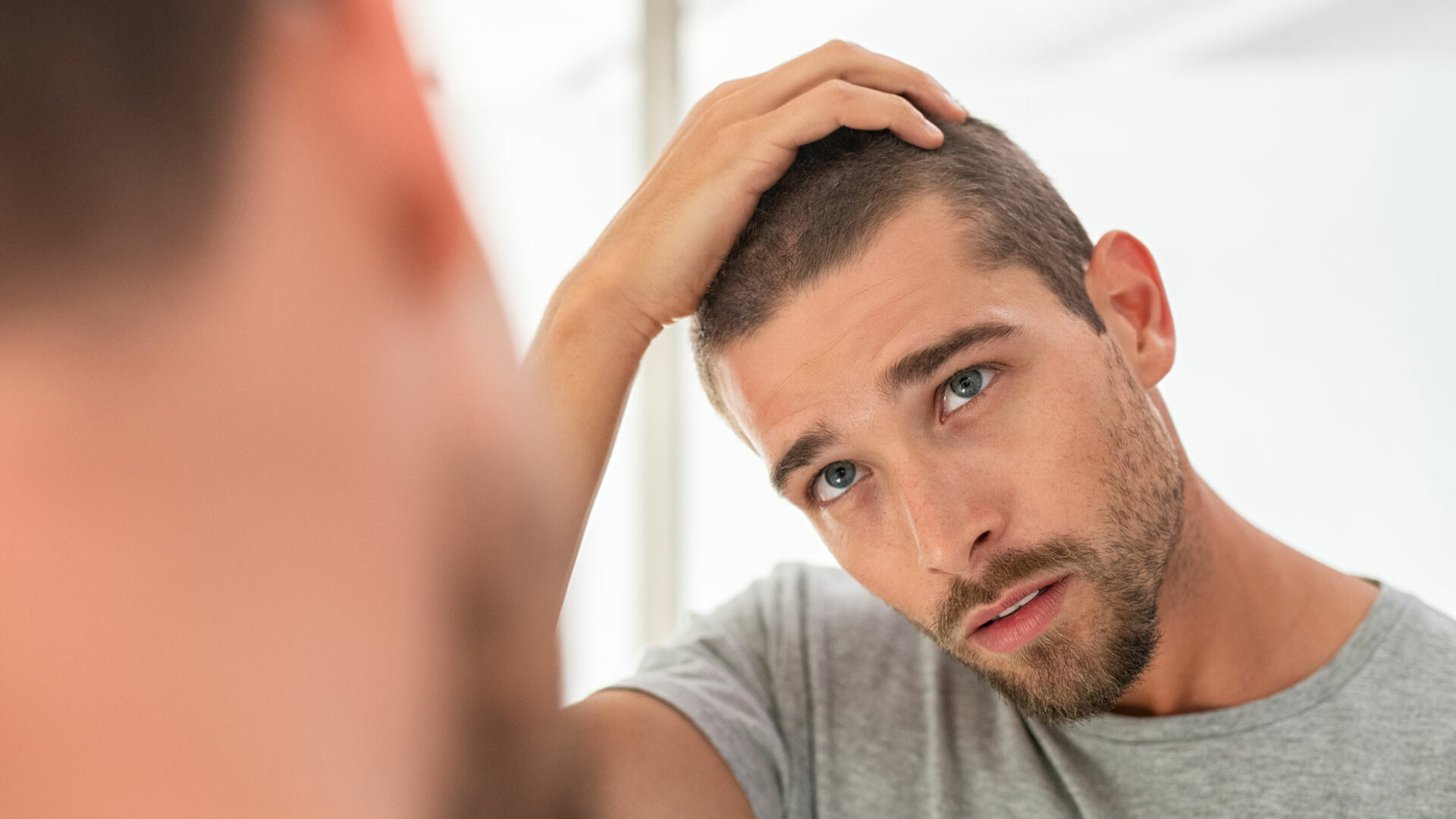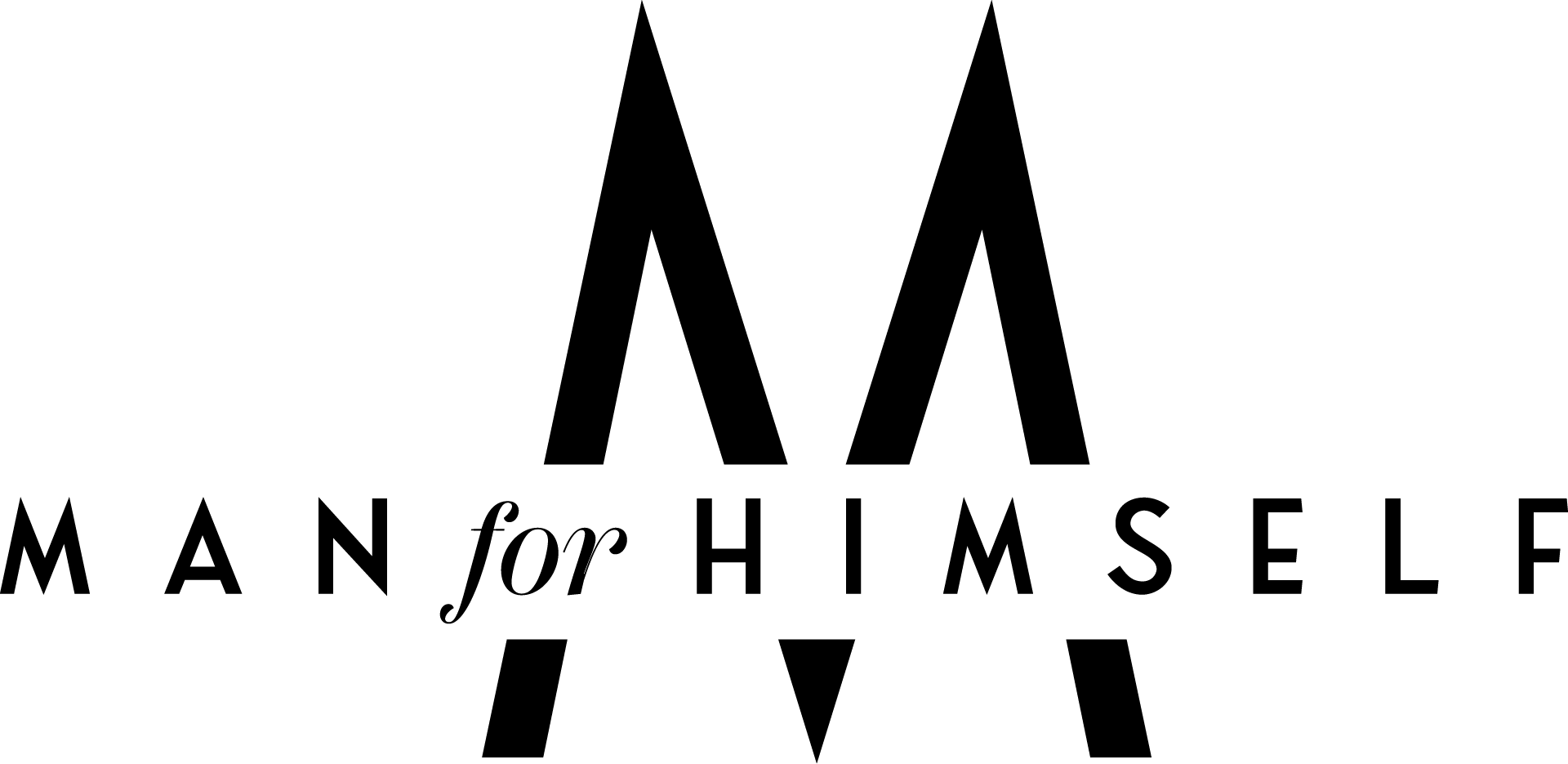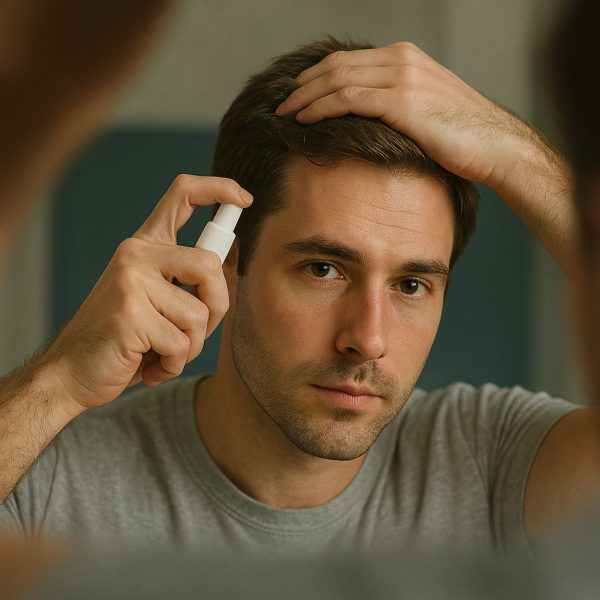
We’ve spoken a lot about hair loss and how to prevent it on Man For Himself. We’ve had some experts provide solutions and we have looked at the best products to use to help improve the health of your hair and also disguise the thinning of hair.
There are so many ways to tackle hair loss; with shampoos, supplements, herbal remedies and hair transplants. There are also more unusual ones… some of which you might have heard of, some that you haven’t and some which you think just sound a bit mad!
Scalp Micropigmentation
Scalp micropigmentation (SMP), is one of the slightly more invasive procedures to combat hair loss, although it is not considered surgical. You will probably experience some pain but not as much as a hair transplant.
SMP is where ink/pigment is applied to the scalp, with precision, to replicate the appearance of natural hair growth. It can create the appearance of stubble on a shaved head or it can help with the increase in density of hair.
Usually, it should take around 3 sessions of micropigmentation to complete a bald scalp. Each session should take around 1 to 4 hours. It is a gradual process which means you can decide on how dark/light you want to go, the density and the specific hairline.
Scalp micropigmentation can be used for men with thinning hair and extreme baldness, but also as camouflage for those with scars or as an option for those with alopecia.
There are different levels of pigmentations available. Some are more long term, whereas others are more short term and will fade relatively quickly. Either way, fading will occur at some point.
Micropigmentation is different to a normal tattoo as it uses a smaller needle and the ink goes deeper into the epidermis.
Laser Technology – iRestore Hair Growth
iRestore uses clinical strength low-level light/laser technology to help men and women who suffer from genetic hair loss.
The helmet provided uses red light therapy which helps stimulate the growth of hair, leading to thicker and healthier hair.
iRestore found in one of their studies that 100% of those who tested the iRestore showed visible hair growth. The level of hair growth will vary from person to person, but there should be noticeable hair growth over a period of 3 to 6 months.
Red light therapy works by stimulating the hair follicles and increases energy production. It basically gives the follicles and cells and kick start.
It will help to extend the growth phase (see previous articles on the stages of hair loss) and wakes up dormant hairs to start growing.
The low-level light technology provides the right amount of output so it doesn’t damage the hair or hair follicles. The helmet uses a combination of lasers and LEDs. The lasers will penetrate more deeply than LEDs, and the spot stimulation provides powerful and focused treatment. The LEDs provide a more broader stimulation over a larger surface area.
The helmet can be worn in the comfort and privacy of your own home where you can sit and work whilst it treats your scalp. It is hands-free so you don’t need to worry about being plugged in. One of the major benefits is that it is completely pain free, unlike other more invasive hair loss treatments.
How To Use:
Place the helmet on your head. Press START to begin the session. It automatically switches off when it is finished. Suggested usage is 3 times a week for 25 minutes per session.
Key Benefits:
- FDA-cleared
- Drug-free
- Safe and effective process
- Pain-free
- Portable
- If you aren’t happy, send it back after 6 months for a full refund.
CNC (Capelli Natural A Contatto) 3D Printing
A wig might be low down on the list of options for most men, when it comes to hair loss. We all think back to those embarrassing toupees a teacher might have worn at school…you could spot them a mile away and they normally wouldn’t fit properly.
Fortunately, technology has improved tenfold when it comes to wigs and this will be a good option for men who are nearly completely bald or losing a lot of hair in a significant area of the scalp. They have also been highly recommended to those who suffer from forms of alopecia or have suffered from scalding on the scalp or damage from failed hair loss treatments.
For CNC 3D printing, a mould is taken of the head and the areas of hair loss are mapped. A 3D image is created on a computer and a micro-thin scalp is then ‘printed’ out. This ‘scalp’ should be breathable, anti-fungal and antibacterial.
Donor hair (real human hair) is then selected by colour and straightness, and sewn into this micro-layer. The idea is to create the illusion of natural hair growth. Your wig is then non-surgically fitted by a professional.
It can be worn during any sports and can be cleaned at home.
Spray-on Concealers / Hair Building Fibres
Many hair loss treatments, particularly the more invasive ones, can be very expensive. One of the cheapest ways to disguise hair loss is to use a concealer, just like you would on your face to cover up a blemish.
Using concealer is extremely easy and it is particularly useful for those of you on the go who are looking for a quick hair loss fix.
With demand for these products constantly on the rise, brands have had to create products specifically for the scalp, that won’t affect the health of the skin on your head, and your hair.
There are different varieties of hair concealers. You can literally buy ones that are more like makeup, there are sprays (such as coloured dry shampoos) and hair building fibres which are more of a powder that you shake onto the scalp. Toppik is one of the most well-known brands for hair building fibres.
It is worth noting, this is probably a solution for people who have patches of hair loss. For someone who is going in to the balding phase, there is a strong chance this won’t look natural.
Key Benefits:
- Cost effective
- Safe
- Drug-free
- No side effects
- Quick fix
Hair Cloning
You might have heard of hair cloning and it is one that is still in the process of being developed and researched, as an option for hair loss.
The idea is to extract healthy hair follicles and create clones of them in vitro, in a laboratory, and then place them back into the scalp with the intention of them regenerating and continuing to grow.
Unfortunately, there have been numerous drawbacks in research as it is an extremely complicated process. When it comes to extracting cells, the number of healthy cells can be extremely limited and it is very difficult to keep them alive once extracted.
Whilst hair cloning is not currently available, it is being researched all over the world; from universities in Berlin to right here in the UK in Durham. It is reported that once it is available, there will supposedly be minimal scarring, no side effects and a relatively short process.























































